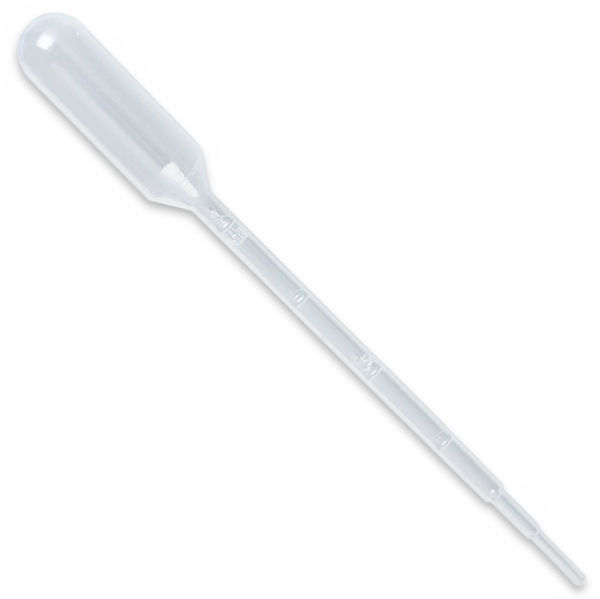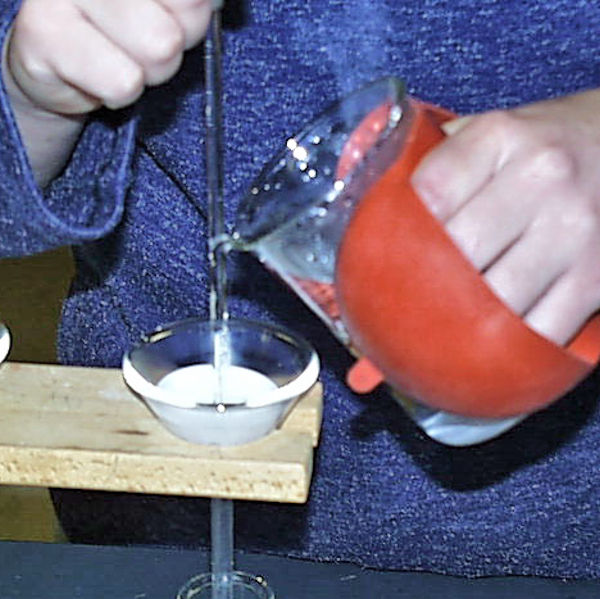You want to pour a liquid out of a bottle and end up dribbling it all over. There's now money lost and a mess to clean up. What's a frustrated soaper to do? Take a lesson from chemists, of course!
Chemists also have to pour liquids that are expensive or hazardous, and they use several techniques to minimize the mess.
Plastic pipettes work well for small amounts of thin liquids
This would include most essential oils (EOs) and preservatives. If the liquid is thicker, try removing some of the pipette tip to enlarge the opening.
Plastic pipettes are meant to be disposable, but they can be reused for the same material if you want to minimize waste. That said, I normally discard my pipettes after a soap or lotion making session.
The cost is low if you shop around. I usually use the 3 mL size, but they are available in a 10 mL size. Some soap suppliers sell these, but check prices on Amazon and at craft stores.

A pour stick is a better for pouring larger amounts of liquids.
The classic pour stick for a chemist is a smooth glass rod, but most soap makers do not work in a chemistry lab. A pour stick for soap or lotion making can be any convenient tool that is more or less straight.
Suit the pour stick to the job -- Use a toothpick for pouring a tiny bit of EO from a small bottle. A chopstick works well for pouring fragrance oil out of a larger jar. The flat face of a spatula can be an effective pour stick when pouring thick soap batter from a bowl.
There are different ways to pour with a pour stick. The classic single-handed method used by many chemists looks like this:

A single-handed approach can be difficult to coordinate, and it does not work when pouring from larger or heavier containers. Sometimes a two handed method works better and is safer:

It can also be helpful to angle the pour stick backwards to encourage the liquid to flow down the stick:

Still having trouble?
If you have been having poor luck using a pour stick, don't give up. Here are some tips:
Practice! Experiment with a container of water to get the hang of using a pour stick before you have to pour the real thing.
Sometimes a larger and/or smoother pour stick works better for thin liquids. For example, if a toothpick doesn't work for pouring from those tiny EO bottles, try a chopstick (larger item) or a plastic drinking straw (larger, smoother item).
Sometimes a flat pour stick works better for thicker liquids. Try pouring onto the flat of a butter knife or the flat side of a spatula.
Copyright © 2002-2025 - All rights reserved by Classic Bells Ltd.
Template by OS-templates.com